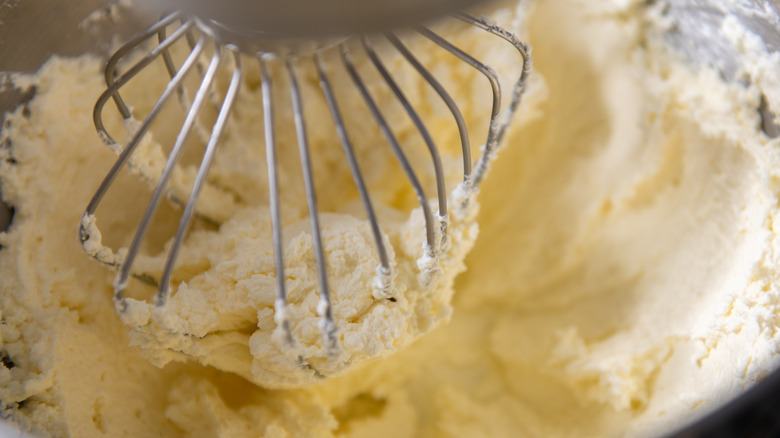Why You Shouldn't Rush Beating Butter For Pound Cake
Ah, the wide, wonderful world of cake. There are few people on earth who would refuse a towering wedge of fluffy, layered white cake, a dense square of death by chocolate cake, or a fruity bowl of strawberry spoon cake. In this stressful modern world, cake just seems to make everything all right — at least for a precious few moments.
And while tall frosted creations and dazzlingly besprinkled desserts can be festive choices, there's something simple and satisfying about tucking into a well-made pound cake. Sure, pound cakes might not be the prettiest choice out there, nor the most complex, but an excellent pound cake is moist, tender, and sweet, ready to be enjoyed as is alongside a cup of strong coffee or heaped with toppings including sliced fruit, whipped cream, chopped nuts, or a cold scoop of ice cream.
Pound cake isn't hard to make; in fact, it takes its name from the simplest versions, which call for a pound each of butter, flour, sugar, and eggs (via What's Cooking America). But there are a few tricks to getting it right, and one of them requires a little bit of patience.
Don't rush through the crucial creaming step
If you like baking, you're undoubtedly familiar with a crucial step called creaming. According to Martha Stewart, creaming softened butter with sugar in an electric mixer at medium speed does so much more than simply combining the two ingredients. It actually structurally alters the butter. Sharp sugar crystals, as they're beaten into the butter, "make room" in the butter for it to be able to emulsify with any liquid in the recipe, such as eggs and milk. Even emulsification of all cake ingredients — as well as all the air that gradually gets whipped into the butter-sugar mixture — helps ensure a uniform, fluffy crumb, instead of cake that's overly crumbly or dense. This is particularly important in pound cake, in which the light, aerated texture is essentially the star of the dessert.
That's why it's so important not to rush this crucial step. Southern Living notes that depending on the power of your mixer, creaming can take as little as one to as many as seven minutes. That might feel like a long time — especially if you're holding a hand mixer and your wrist is aching — but it's necessary in order to successfully break down the butter as well as to whip in plenty of air. By the end of creaming, Taste of Home notes, the mixture should be plenty fluffy, with peaks, and no discernible sugar granules. This wonderful stuff will ensure the success of your dessert.

